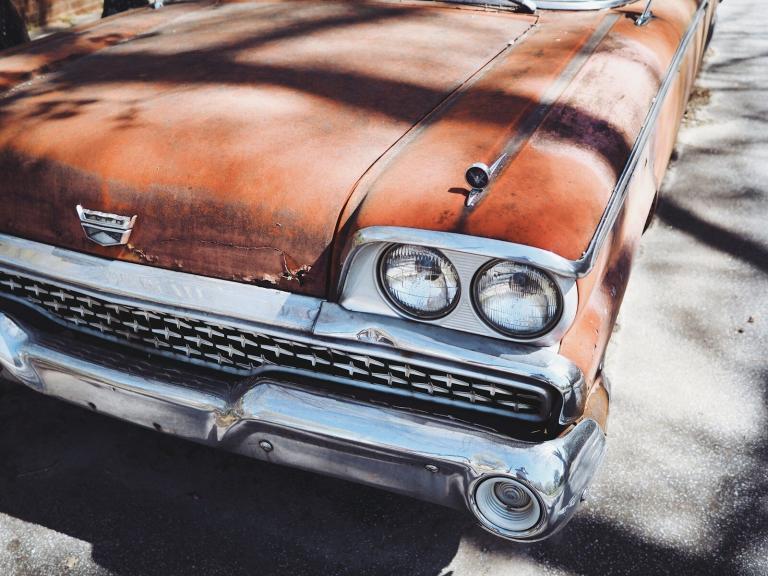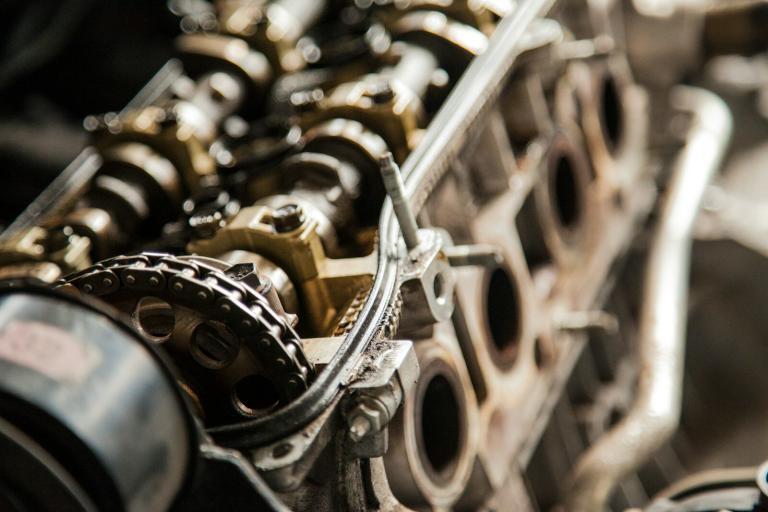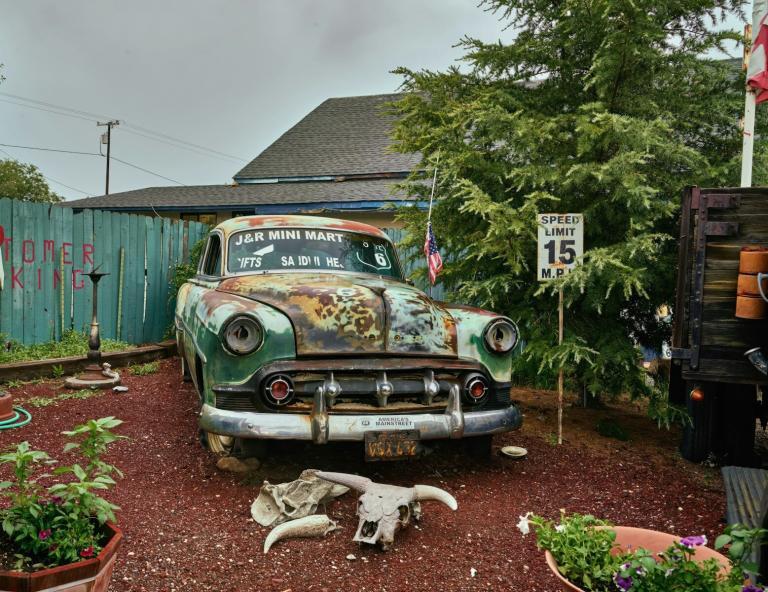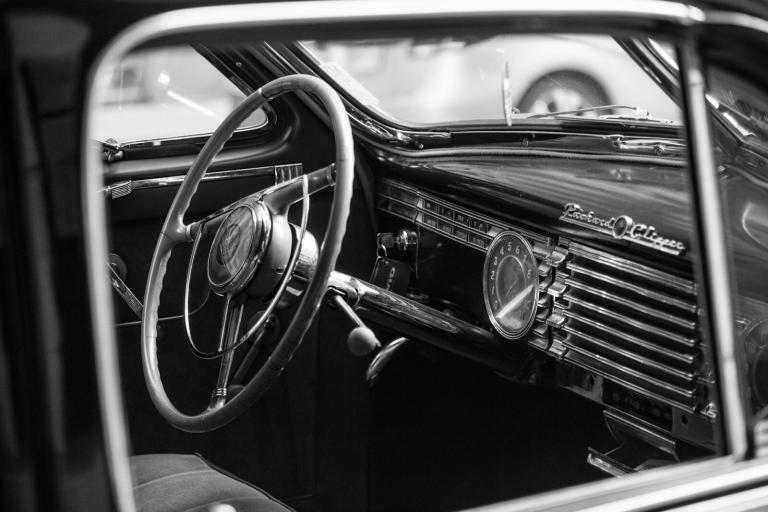
Is it true that the European Union will ban the repair of old cars?
Brussels wants to ban fixing of what they call "residual vehicles"?
The big question turning around in forums, social networks and user groups.
But, no panic. For the time being, no
Is it true that the European Union will ban the repair of old cars?
Brussels wants to ban fixing what they call “residual vehicles”?
Will the European Union force me to scrap my car to buy a new one?
Will the maintenance of my classic car be outside the law?
As we like to share information directly here, I tell you right now that the answer is “NO” to the four questions above and as of today, there is no objective factor which suggests that tomorrow it may be YES. Let’s get started:

The news appeared in the "press corner" of the European Union's WEB site
A few weeks ago, news began to spread that the European Union intended to regulate the right to repair any vehicle older than 15 years. This came from a document that you can see HERE (it is available in PDF and WORD in all EU languages) and was in fact published some months ago. In reality, it’s a draft of supposed future regulations to control the treatment of end-of-life vehicles, in which the concept of “residual vehicle” is mentioned. The draft proposes a set of criteria to define what is understood as a “residual vehicle” and a set of criteria by which a vehicle considered a “residual vehicle” is declared as “irreparable”.
And this wording of the “residual vehicle” concept has caused great concern among owners of classic or historic vehicles. And hundreds of questions have arisen, among which I can list a few:
- Given the wording of the law, should i understand that any restoration will be forbidden?
- And how can we maintain a classic vehicle if, according to future regulations, the need to repair elements such as the brakes, steering box or gearbox would lead to the irreparability of the vehicle?
- Does this mean that this is the definitive end of classic cars because none of them can be maintained anymore?
- Are classic cars the target of this supposedly future regulation?
Obviusly we don’t have the crystal ball to guess the future (I wish 😊): But I’d tell you that this will not happen. Classic cars are not the target of this future regulation. And although we obviously do not have the power to guess what the European Union or any other public administration will legislate, here is our point of view.
The purpose of the rule
If you read it in detail, you will see that the purpose of this proposed regulation is not to legislate about what can and cannot be repaired, but about:
- What to do with the remains resulting from scrapping a car, in order to ensure that most of the waste from a scrapped vehicle is recycled and will be used as material to manufacture new vehicles.
- What kind of controls can be made to prevent vehicles in a -really- irreparable state from being sent to third countries where the legislation is more tolerant in vehicle control, and the debris they generate.

- In short, if one reads the draft regulation, it is understood that the objective is to avoid that the remains of scrapped/dismantled vehicles spread uncontrolled through third countries, either like scrap or like poorly repaired vehicles.
RESIDUAL VEHICLE : The crux of the matter
The part that specifies what is considered as repairable and better said, what is understood as a residual vehicle is an annex to the definitions. You can see it here:
First comment: It is important to note that the section on definitions or “what does it mean X, Y, Z“ is always part of the wording of any regulation or even of any contract between individuals.
Second comment: In this annex, if you open the document, you will see that there is a very open wording, enough to declare as “waste” those vehicles that really are, but also enough to declare as “repairable” anything if there is a favorable technical report on the feasibility of the repair: a report that, if necessary, any workshop would surely be entitled to generate.
I will also tell you that partially, this already happens: as of today, if you repair -by your own decision, because you negotiate it with the insurer, or whatever reason- an accident vehicle that was declared “total loss”, it is mandatory to pass the technical control after the repair (at least in Spain).
Annex I : The criteria for declaring "Residual vehicle". In detail
As I tell you, this is simply the “annex”. The definitions part. It is NOT the object of the regulation. Anyhow, in this draft the wording is extremely ambiguous, in my opinion not very rigorous, and invites to be commented in detail. I group commnts into three sections:
SECTION 1 : Technical inconsistencies in the criteria to qualify a vehicle as "residual".
If you look in detail, there are parts of the wording that clearly “squeak”. Here are three examples:
- “Brakes with excessive wear”. : the components of a brake are consumables subject to wear. Which kind of wear should we understand? Brake pads? Brake rotors? The O-rings of a brake cylinder that costs only a few tens of euros to replace?
- “Wear and tear of “steering”. : A steering box after a few years accumulates looseness that often needs to be repaired, not meaning at all an irreparable vehicle. Besides the fact that a steering box is not only easy to replace/repair, but it is also quite inexpensive on most models.
- “Fuel leaks”.: A fuel leak is usually in 90% of cases a 10 euro rubber pipe to be replaced. Does this mean that if a 10 euro rubber pipe breaks we have to scrap the car?
These are three examples of a technically non-rigurous wording -which is probably what has raised most alarms among users- But as I said, it is also true that such mentioned “failures”, even in the draft, fit in the statement “a vehicle is damaged” and CAN BE considered as irreparable”. In no case “SHALL be considered” is explicitely mentioned.
Section 2: MIXED CRITERIA: "How complex is to repair" Versus "How critical is the repaired component":
Another point that in our opinion could be really improved in terms of wording is that there are some definitions in the mentioned annex that mix “technical criticity” – how complex it is to repair” with the “functional criticity” of the repaired item. Here is an example:
- Repairing a broken chassis broken is complex (but not impossible) and it is critical that it is well and professionally done: Here we are talking about a high technical complexity in the execution of the repair.
on the other hand:
- A steering box/rack is critical in terms of functionality, for obvious reasons, but replacing it is an easy and inexpensive operation to do – for most cars.

So finally, what is the criterion? Is it that the repair is very difficult to perform or is it that the item to be repaired is critical on the sake of the safety of the vehicle?
Mixing both criteria within the same group of sections is conceptually wrong and, once again, leads to confusion in interpretation.
Section 3: ELEMENTS THAT IDENTIFY THE CAR. Not all the ones mentioned are part of it
Not all those mentioned are, nor do they legally identify the vehicle. This is another part of the wording that contains apparent contradictions. It can be seen that the criterion of “irreparability” is mentioned if there is a change of engine or gearbox because this means that the vehicle no longer has a well-defined identification. There are statements here that technically clash with reality:
- The identification of a vehicle number is in the stamping found on the chassis (besides a plate riveted somewhere which contains the same number). This is the real “identity card” of the vehicle, and the one that links it with the license plate and the owner before the country’s traffic authorities.
- The engine or gearbox, whether or not it has a serial number, may be part of the vehicle’s scandals kept by the manufacturer for maintenance purposes but does NOT appear in the official/legal documentation. What appears in the official/legal documentation is the type/model/power of the engine. But not its serial number. In other words: changing the engine block does NOT imply changing the legal identification of the vehicle.
- Another thing is that you replace the engine with another model, more powerful and/or more modern. In that case you will have to make a project, pass homologation and technical control. But in this particular case, you are dealing with a technical enhancement of the vehicle, which follows its own procedures, but does not have to do with the identification of the vehicle itself.
- The gearbox serial number is usually never associated with the vehicle. As we mentioned, maybe the manufacturer has it in its parts list of that unit, but it has nothing to do with the vehicle data sheet: In other words: changing the gearbox does not alter the identification of the vehicle.
- And with engine replacement, you can go even further: Apart from the fact that technically there can be many reasons to change a gearbox or an engine of a vehicle, without it having to be a “residual vehicle”, we could go into asking what is meant by “change engine”.
- Block?
- Block+pistons?
- Block + pistons + connecting rods?
- Do we include the crankshaft?
- ….
- ..
The phrase “engine replacement” is too general: I give you another example: BMW, in its procedure for certain breakdowns (such as damage to the timing chain housing of N20 engines, where it is machined into the block without a separate cover), proposes directly to replace the block + pistons – for many engines, block, pistons, and rings are part of one single part number -: Do we consider that “engine replacement”?
Summary
- The wording of “what is considered a residual vehicle” which has generated so many concerns is only an annex of definitions on a draft regulation whose objective is the treatment of waste generated by a vehicle when it has reached the end of its life. This annex seems to be simply intended to provide a sufficiently general framework to be taken as a reference to be able to invoke the declaration of irreparability of a vehicle when necessary. But again: It is only an annex of definitions.
- The wording of the aforementioned annex is very general, vague, ambiguous and, in our opinion, not very rigorous. It does not appear to have been overly consulted or cross-checked with technical specialists because mixes concepts such as the technical cost of a potential repair with the functional criticality of the repaired item, it includes cheap and easy repairs and does not determine exactly which part is an option and which part is a supposed obligation. So it results so open-ended that you could almost interpret anything about it in one way or the other. This is what, in our opinion, has created the confusion and concern.
- It does not consider anything about collector vehicles, historic vehicles, restored classic/historic vehicles, etc. But this type of vehicle does not seem to be the target or the subject of the regulation. And even so, if one day, due to the implementation of the same, they would be “by accident” impacted by potential future restrictions, the exceptionality can always be negotiated with authorities via the Federations,clubs, associations, etc. In fact, this is already being done with other types of exceptions to restrictions and/or regulations, such as the CO2 tax, the restrictions on LEZs or the regulation of historic vehicles.
FINAL COMMENT
While I obviously can’t predict what will be legislated tomorrow, or next month or next year, it doesn’t seem that the draft text should be of any concern to owners of classic or historic vehicles. I would tell you to keep enjoying your car and keep giving it all the care and love that you has given to it so far because you will surely keep it for many years to come.


